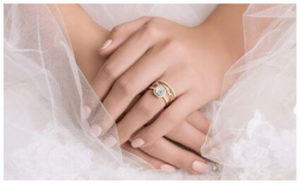Time For Relationship Building
It’s not an easy time to sell new customers, but it is a critical time to nurture and build on existing customer relationships.
“It’s the time to check in with your customers,” Andrea Hill, president of the Hill Management Group, told jewelers in a recent webinar hosted by InStore. “We’re all in this together.”
Mail a handwritten note, make a personal call, send an email or text, and engage on social media. Have authentic conversations with your customers. Share how your business is coping, what you are doing with your family, and inspiring human-interest stories. Hill noted that pitching product now would get lost in the noise. “Dig to the heart of things, which is always the best place to market.”
Customer intelligence is a key component of effective customer relationship management, and when effectively implemented, it’s a rich source of insights into the behaviors and experiences of a company’s customer base.
 Get a handle on what data exists in your organization and how it is being used, and take the time to update your database. Focus on gathering and managing intelligence that helps you create deeper relationships with your customers.
Get a handle on what data exists in your organization and how it is being used, and take the time to update your database. Focus on gathering and managing intelligence that helps you create deeper relationships with your customers.
“When you really know your customers, you can curate products for them, things that they want, need, and love,” said Martin Rapaport, president of the Rapaport Group in a recent webinar. He encouraged jewelers to be advocates for their customers and to use technology to target their messaging.
Customer Psychology
Marketers are advised to plan for potential long-term changes that this crisis may bring to their customers’ underlying psychology and the values underpinning their purchasing decisions. Although experts agree assessing this is complicated.
In times of crisis research shows will people engage in comfort-seeking experiences that bring them a sense of control, like buying things, cites luxury market analyst Pam Danziger, president of Unity Marketing. “Short term, uncertainty is a barrier to discretionary shopping in general. Long term, it may predispose people to make choices based on their underlying sense of identity. People may be more likely to choose environmentally conscious brands in the future, a trend we already see in the culture. It may predispose them to indulge in more luxury purchases as significant to their self-esteem.”
Trend Hunter, in its 100 “disruptive” ideas for 2020 updated in March, agrees that consumption habits emerging  from this crisis will push consumers toward healthier, environmentally conscious choices. The consumer research firm encourages brands to share how they are eco-friendly, sustainable, ethically produced, fighting against climate change, reducing waste, recycling and repurposing.
from this crisis will push consumers toward healthier, environmentally conscious choices. The consumer research firm encourages brands to share how they are eco-friendly, sustainable, ethically produced, fighting against climate change, reducing waste, recycling and repurposing.
Among its case studies, Trend Hunter cites ethically sourced diamonds as increasingly popular with Millennials, particularly lab-grown diamonds. The report recognizes the success of the lab-grown diamond industry to appeal to Millennials seeking out brands with production processes “more aligned with their personal values and ethics”.
However, groups like the World Diamond Council and Diamond Producers Association are more aggressively advocating natural diamonds with social purpose, sharing stories of the mining industry’s efforts to reduce its carbon footprint, uplift communities in producing countries, and maintain the integrity of the supply chain.
Brands related to the wellness space can expect a healthy future, believes Trend Hunter. Among its brand studies is the “Moment Pebble”, a rechargeable, light-up stone that fits in your palm. The developers are crowdfunding to bring this “tool for modern mindfulness” to market, creating content and community around meditation and mental health. Imagine the tales you could tell with gems that have centuries-old history as talisman, and happen to already be trending with Millennials who appreciate their metaphysical properties.
Jewelry Sells
Undoubtedly, with so much uncertainty surrounding this very dynamic situation, buying jewelry isn’t top of mind for folks right now. But don’t think you’ll change their minds by going on sale, stressed Hill. “Jewelers would be cutting into their margins, with those likely to shop the very people who are already prepared to buy from them if they choose.”
 Jewelry always sells, Hill reminded, but the things that sell change during crises and recessions. “Most fine jewelry sales shifted to silver In the 1930s and 1940s. During recessions, lower price points matter. Styles also change, typically getting simpler and smaller.”
Jewelry always sells, Hill reminded, but the things that sell change during crises and recessions. “Most fine jewelry sales shifted to silver In the 1930s and 1940s. During recessions, lower price points matter. Styles also change, typically getting simpler and smaller.”
It’s important for jewelers to be light on their toes, said Hill, and not merchandise or market the way they always have. “Stay positive, be proactive and creative, and surround yourself with good advice and the best input possible.”
Leave a Reply
You must be logged in to post a comment.